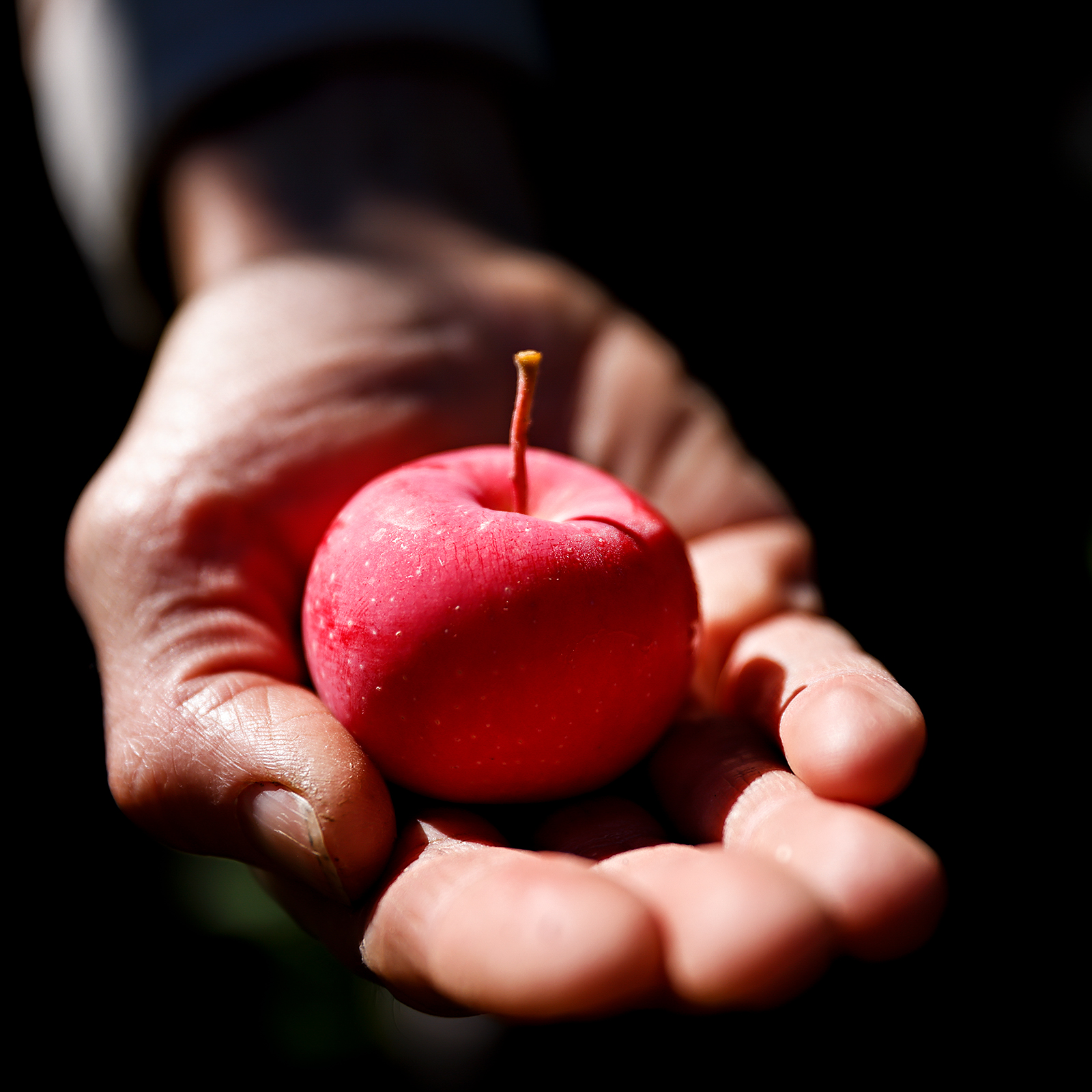
Along a bike trail in Whitefish grows a special tree. The tree seems innocuous to the casual passerby on a fall afternoon — to an astute observer, the tree appears to be an apple tree. Still, hardly a novelty in the Flathead Valley. On the right fall afternoon, one might see a brilliant red fruit hanging onto a branch by a stem, just beckoning for someone to pluck it from the bough. Once picked, however, it rapidly becomes clear that this is not your everyday supermarket fruit.
The skin is a beautiful shade of red, but one bite reveals the true secret of the fruit: the inside flesh is the same hue.
Rod McIver was selling apples at the Whitefish Farmers Market a few years ago when someone approached him and handed him an apple from the tree and asked if he could identify the variety. After cutting into it with his knife, McIver knew immediately what it was: a Scarlet Surprise.
“It’s a decent apple, but it’s tart, a little sharp,” McIver said in his thick South Carolinian accent. “It’s got a little bit of a cooked apple flavor, usually with some tannins, but it’s a beautiful red inside and out.
“I didn’t know anyone else in the world knew about it.”
McIver has a Scarlet Surprise tree in his backyard, one of several hundred apple varieties in his three-acre home orchard off Rose Crossing. In a fenced-off portion of his front yard is a garden and a dozen fruit trees, mostly apples with a few exceptions (one of McIver’s favorite pear trees, a cross between an Asian and European variety, towers over this part of the yard). The area immediately surrounding the house is dotted with more trees — pears, plums and a few more apples.
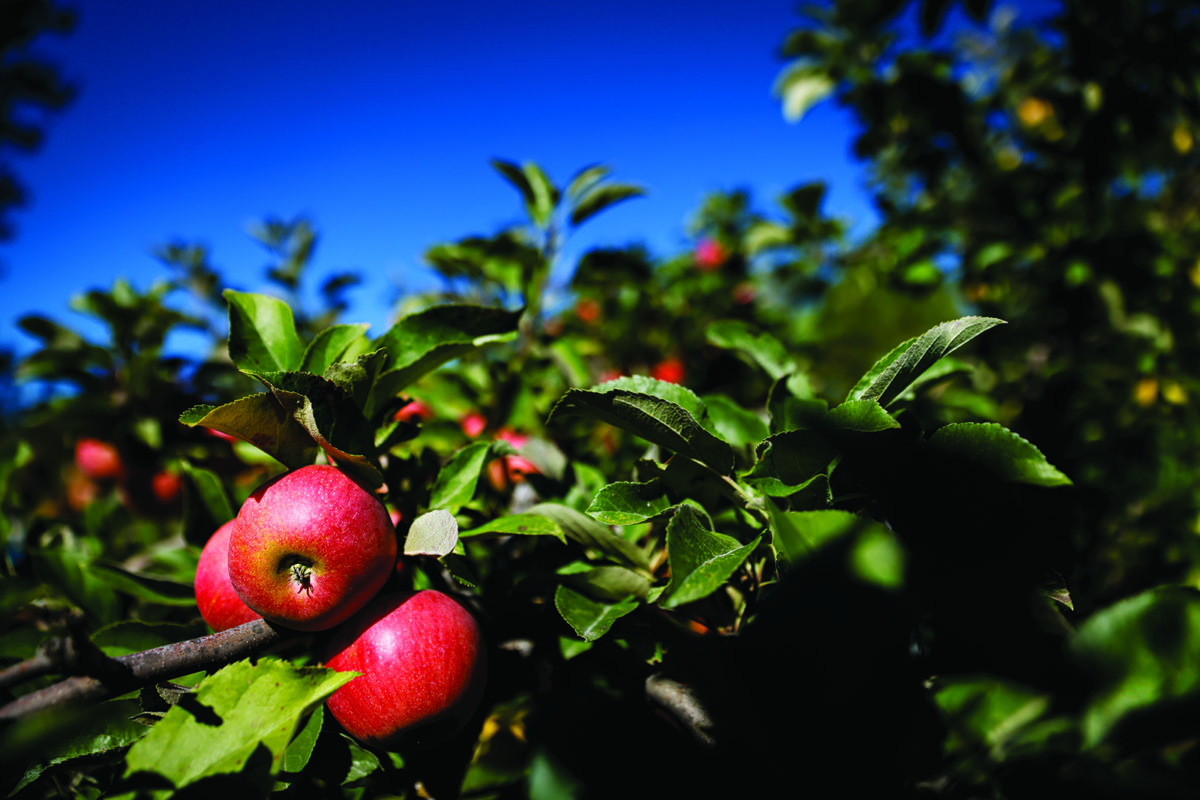
But further back on the lot, behind a red barn, sprawls the heart of McIver’s passion. He calls it his Montana home orchard project — 13 rows of seven or eight trees apiece. Each tree has anywhere from one to 10 different varietals grafted onto them. By McIver’s estimate, he is propagating somewhere between 200 and 250 different fruit varieties, mostly apples. One, the Hidden Rose, also boasts a vibrant pinkish-red inside. McIver claims it is “beautiful inside, but ugly outside, and very disease prone.”
Of course, according to McIver, the Scarlet Surprise shouldn’t garner too much attention either.
“Other than the color, it’s not a great apple,” McIver said. “But it’s a great novelty.”
McIver started propagating apple trees after retiring as a smokejumper and moving to the Flathead in the 1990s. Now his operation is part-hobby, part-experiment and part-commercial — he sells cultivars online and both fruit and seedlings at the local markets. His interest in the classic fruit stemmed from a single variety — the Martha crabapple.
It’s a diminutive varietal, the skin a yellow wash with splashes of carmine down the sides and a streak of russet near the stem.
“It’s a fairly early apple, but it ripens over a long period so you can snack off it for a good month,” McIver said. “It’s beautiful, it’s tough, and most people complain it’s too sour, but I think it just has a wonderful flavor.”
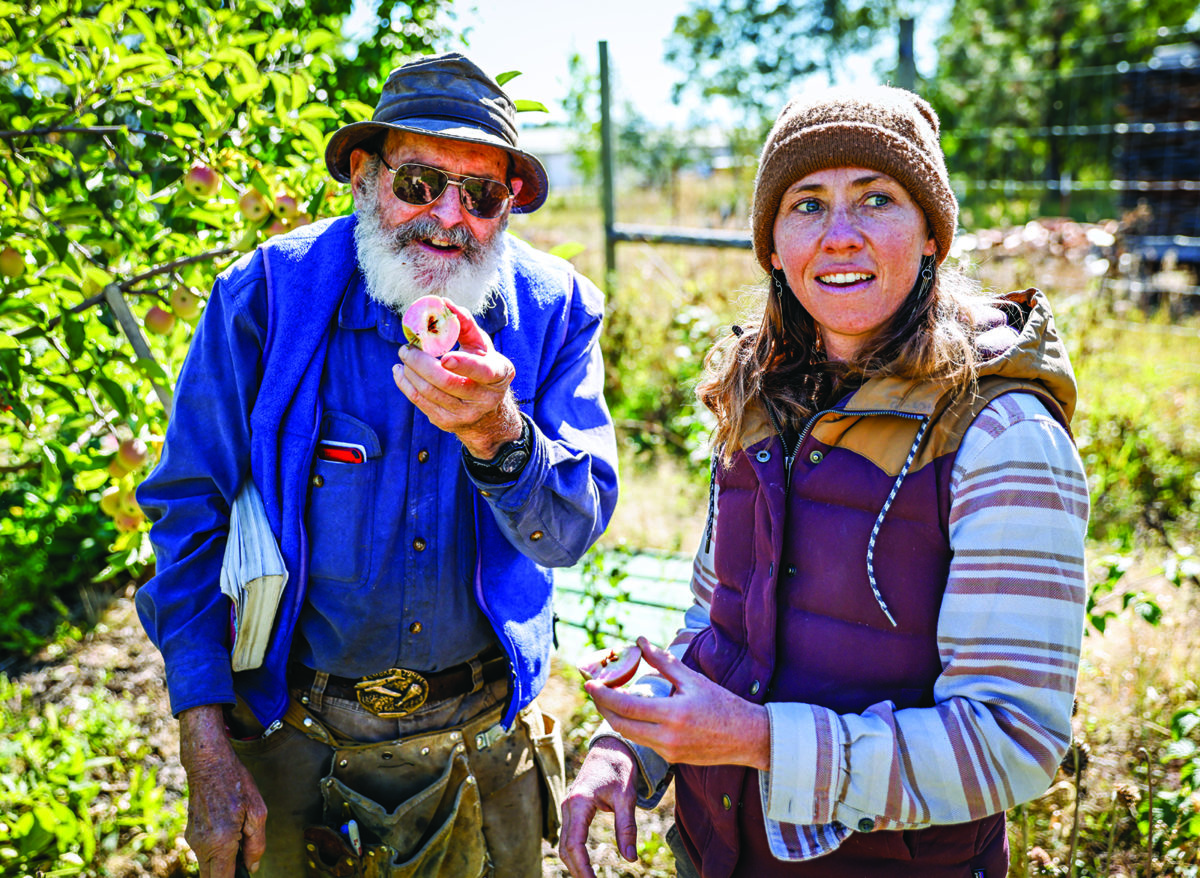
McIver can recite each one of his apple varieties by name and flavor profile, a common quality among enthusiasts of the fruit, though McIver has a broad palate.
Katrina Mendrey is the orchard program manager for Montana State University’s Western Agricultural Research Center and oversees the Montana Heritage Orchard Program, which works to document the history of Montana orchards and identify apples with unique qualities that allow them to thrive in the state. While compiling a reference guide of historical apple orchards and heirloom varieties around the state, Mendrey often reached out to McIver for samples or help to identify some varieties she hadn’t come across yet.
Last fall, Mendrey toured a few Flathead Valley properties where there were remnants of homestead orchards, including Jim Watson’s Spring Brook Ranch near Foys Lake.
While researching the history of his property, Watson found articles of incorporation of a Sunny Slope Orchard Co. from 1895. A LIDAR scan of the property showed the rough outlines of the old orchard, and he was curious to know if anything of interest was growing.
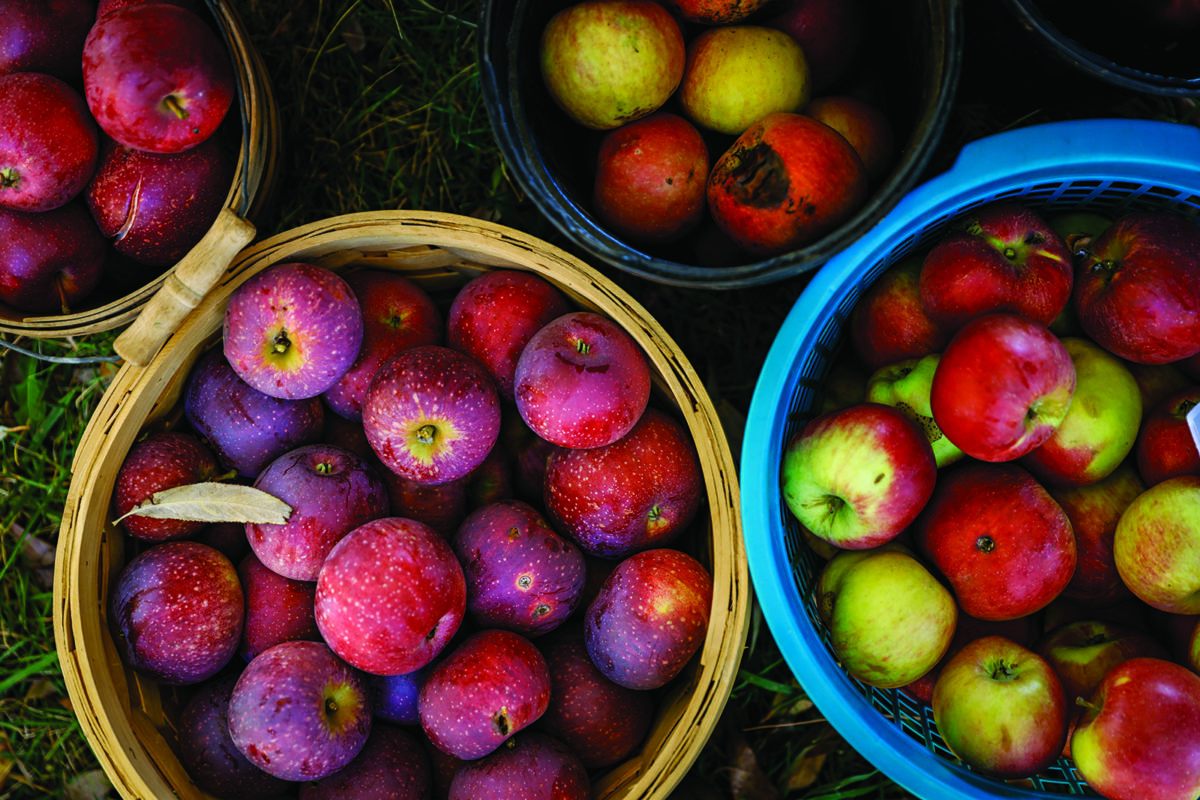
On a walk around the ranch, dozens of apple trees could be seen dotting an open hillside, the carefully spaced-out rows still visible. On another hill, apple trees were deeply intertwined with cedars and larches, barely visible except to Mendrey’s trained eyes. Walking up to one tree, Mendrey used a long cage-shaped picker to snag a few small yellow apples. She took one quick bite and spat out the fruit while jotting down “Transcendent” in her notebook.
Like McIver, Mendrey can readily rattle off apple names and flavors, but the only way to know for sure is to do a DNA test, which costs $100 to run.
One apple on Watson’s ranch eluded Mendrey’s ability to identify by sight and taste, so she snipped a twig with a few leaves to send back to the lab.
“The odds are that everything here is Transcendent, McIntosh or Wealthy,” she told Watson. DNA analysis done through MSU has shown that 20% of sampled apples are Wealthy, 10% are McIntosh and 1.6% are Transcendent Crab. “But you never know. Outside of the common ones, apple identification is hard because there’s been a lot of inconsistency in cultivars over the years.”
Fruit production in Montana began around 1870 when brothers D.C. and W.E. Bass planted a commercial orchard near Stevensville. The Bass brothers grew more than 50 varieties, though “only about a quarter of those were worth growing.”
“I have made more money out of crab apples, particularly the Transcendent, than from any other varieties,” D.C. Bass wrote in 1910.
Apple cultivation came to the Flathead Valley later than other parts of the state according to Mendrey, making the area possibly one of the last places for the fruit to settle.
“Apples have made it around the world; it’s what makes them interesting to people and romanticized in culture,” she said. “They first started in Kazakhstan, traveled the Silk Road and went around the world.
“Montana is where apples have circumnavigated the globe and settled,” she added. “It’s kind of the last place for apples to get to.”
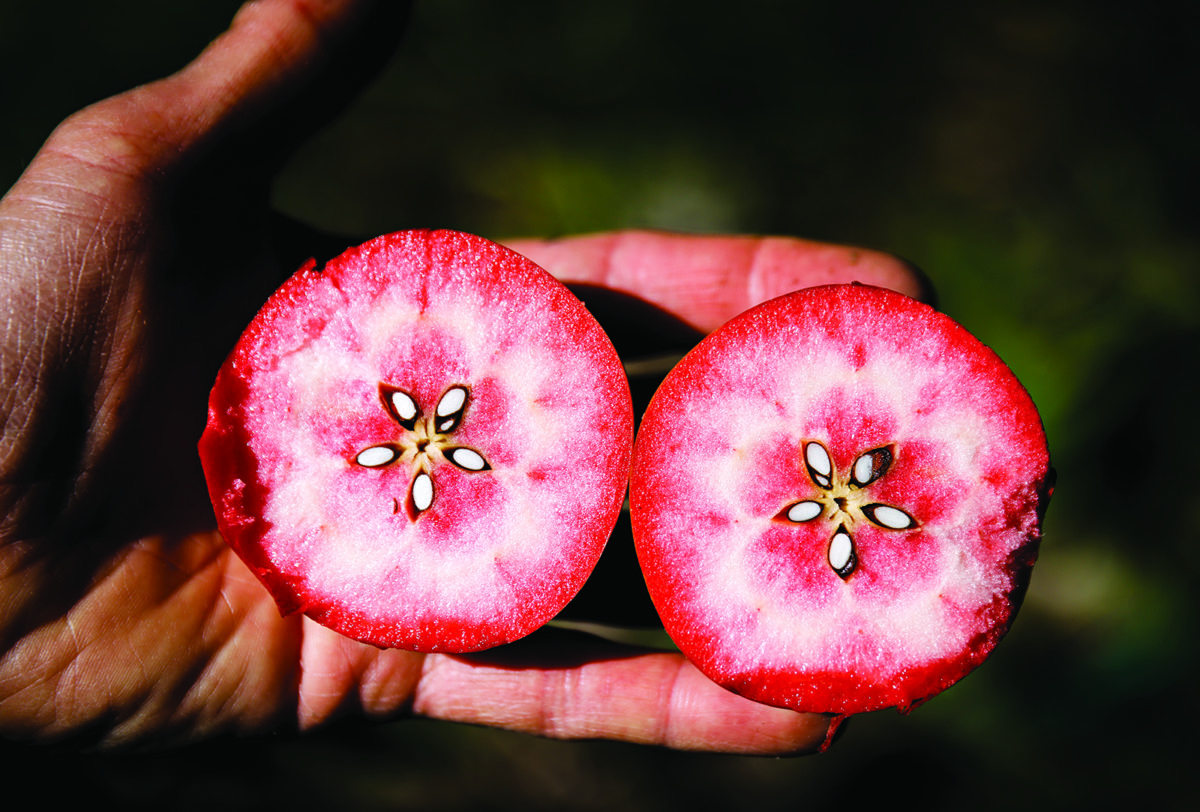
By 1912, approximately 350,000 fruit trees grew on commercial orchards in the Flathead, including one just south of what was then Flathead County High School. Local historian Henry Elwood said that “many students walking to school would detour through the orchard to eat an apple on their way.”
While it lasted, the Flathead’s commercial apple crop was met with acclaim from around the country. In 1921, the Daily Inter Lake reported that a shipment of Roman Beauty and McIntosh Red apples “received a splendid boost in the Kansas City market” for their appearance which was “hardy, of exceptional color, and in very fine condition” for a February shipment.
As apples are hardly a cash crop in western Montana anymore, the biggest focus on the fruit nowadays is from researchers like Mendrey. Similar projects have cropped up in nearby states, and Idaho, Wyoming and Washington all have heritage apple projects. But until recently, none of them collaborated. In 2014, a researcher in Washington located an apple variety thought to be extinct and has since located a half-dozen more.
One interest in locating heritage apple trees is that a large part of early apple production prior to prohibition involved cultivating apples for cider. Over the course of the 20th century, apple production shifted almost exclusively to eating apples, but some old heirloom varieties, if located, could have the perfect combination of flavor profile and hardiness for cider. Currently the Western Ag Research Center is conducting research on the best cider cultivars that can adapt to western Montana climates.
“By nature, heritage varieties should be easy to grow after withstanding Montana’s climate with little to no management,” Mendrey said. “The Holy Grail would be to find a bittersweet apple that could become the next great cider apple.”
In a similar ethos to the Montana Heritage Program, Rod McIver wants to discover apples that thrive in Montana’s climate and might make good cider apples, which partially drives his prolific operation.
Every autumn, McIver presses his own cider at his orchard, inviting members of the community to join in. While he chops and presses the fruit into the quintessential fall beverage, he keeps up a litany of encyclopedic knowledge about his crop and each variety of apple that goes into the cider press.
He has no qualms about talking up the quality and flavor of the cider that he funnels into opaque milk cartons to hand out — every flavor profile he has logged in his memory can blend into a unique brew.
“If people want to get boring apples for cheap, they can go to the store,” McIver said. “When apples stop being boring, we can make some damn good cider from them.”